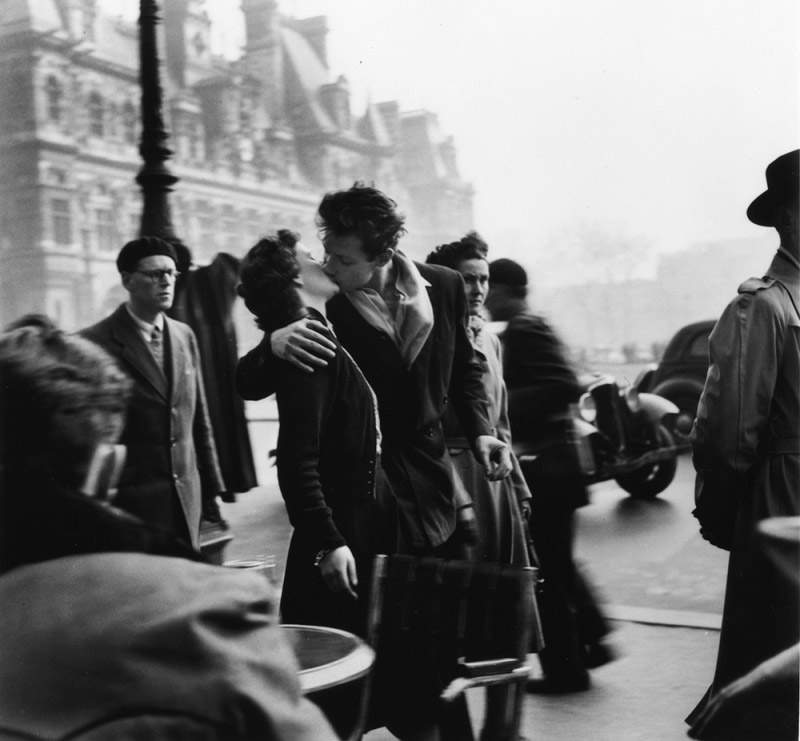From Sept. 23, 2021, to Jan. 30, 2022, the photography of Robert Doisneau (Gentilly, 1912 Montrouge, 1994) will once again take center stage in an exhibition: this time the French master’s shots arrive in Rovigo, at Palazzo Roverella, where the Robert Doisneau exhibition, curated by Gabriel Bauret, is scheduled. Along with Henri Cartier-Bresson, Doisneau is considered one of the founding fathers of French humanist photography and street photojournalism. With his lens he captures the daily lives of the men and women who populate Paris and its banlieue, with all the emotions of the gestures and situations in which they are engaged.
This exhibition at Palazzo Roverella embraces his work without chronological distinctions or any criteria of genre or theme, placing side by side factories, bistro counters, porters, ceremonies, jazz clubs, schools or street scenes in general. Whether these are photographs made on commission or the result of his free wandering around Paris, we see the delineation of a style imbued with a particular forma mentis, which also shines through in his writings and in the captions of the photos; a style that mixes charm and fantasy, but also a freedom of expression not far from surrealism. If style is the man (as Buffon says), similarly photography identifies with some of his subjects to express a kind of restlessness or melancholy.
Gabriel Bauret offers a narrative conducted through 130 black-and-white silver salts prints from the collection of Atelier Robert Doisneau in Montrouge. It was in this atelier that the photographer printed and archived his images for over fifty years, and it was there that he passed away in 1994, leaving a legacy of nearly 450,000 negatives. Doisneau’s is a light, ironic narrative that winks sympathetically at people. Which even becomes tenderly participatory when he photographs lovers and children.
“What I was trying to show was,” the artist recalled, “a world where I would feel good, where people would be kind, where I would find the tenderness I hoped to receive. My pictures were like a proof that this world can exist. I like people for their weaknesses and flaws. I get along well with ordinary people. Let’s talk. We start talking about the weather and little by little we get to the important things. When I photograph them, it’s not as if I’m there examining them with a magnifying glass, like a cold, scientific observer. It’s a very fraternal thing, and it’s wonderful to shine a light on those people who are never in the spotlight. The photographer should be like blotting paper, he should allow himself to be penetrated by the poetic moment. His technique should be like an animal function, it must act automatically.”
Doisneau was born in 1912 in the Paris suburb of Gentilly. His training as a photographer began with an apprenticeship in the workshop of an advertising photographer. But his focus soon shifted to the working-class neighborhoods of Paris and the banlieue, images that began to appear in magazines through the Rapho agency, of which he was a leading member. Then the war prompted him to make himself available to the resistance to give new identities to the wanted. After the Liberation, here are a few reportages for “Vogue” and in ’49 the book produced in collaboration with his partner, the famous writer Blaise Cendrars, La Banlieue de Paris, the first synthesis of the many stories in pictures he will devote to this world. Doisneau describes its everyday life, composing a visual tale in which a deep humanity and a note of humor, always present in his work, are mixed.
 |
| Robert Doisneau's great photography on display in Rovigo |
Warning: the translation into English of the original Italian article was created using automatic tools. We undertake to review all articles, but we do not guarantee the total absence of inaccuracies in the translation due to the program. You can find the original by clicking on the ITA button. If you find any mistake,please contact us.